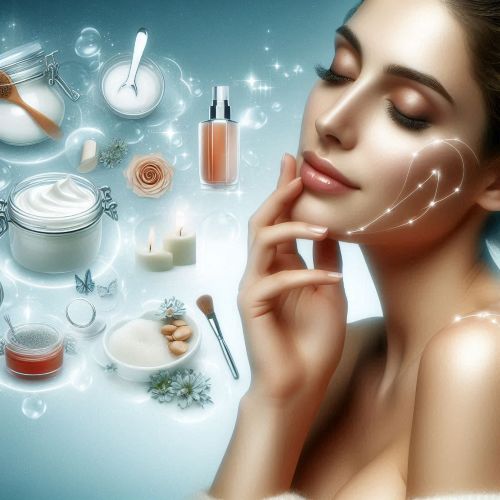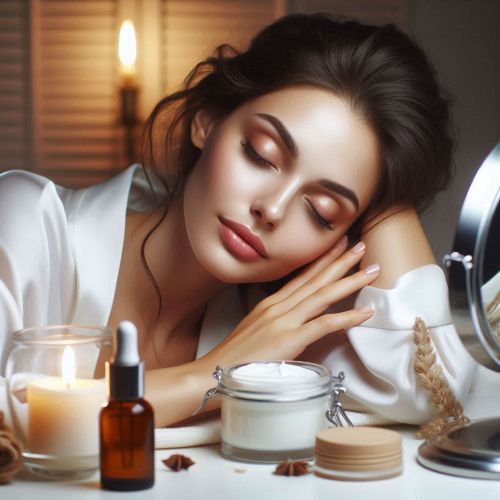-
 DIY: Video master classes
DIY: Video master classes
-
 Aromatherapy
Aromatherapy
-
 Felting master classes
Felting master classes
-
 Eating at home
Eating at home
-
 DIY cosmetics for children
DIY cosmetics for children
-
 Cooking recipes
Cooking recipes
-
 Detergents, cleaning products with your own hands
Detergents, cleaning products with your own hands
-
 Soap making as a business
Soap making as a business
-
 Natural cosmetics. Raw materials for cosmetics and soap.
Natural cosmetics. Raw materials for cosmetics and soap.
-
 Natural oils in cosmetics
Natural oils in cosmetics
-
 News
News
-
 Recipes for balms and conditioners
Recipes for balms and conditioners
-
 Bath Bomb Recipes
Bath Bomb Recipes
-
 Cream recipes. Cream making.
Cream recipes. Cream making.
-
 Lotion recipes. Gel recipes.
Lotion recipes. Gel recipes.
-
 Mask recipes
Mask recipes
-
 Soap recipes. Base soap. Soap from scratch.
Soap recipes. Base soap. Soap from scratch.
-
 Recipes for all occasions
Recipes for all occasions
-
 Natural shampoo recipes
Natural shampoo recipes
-
 Healthy Nutrition Recipes
Healthy Nutrition Recipes
-
 Scrub recipes. Massage tiles. Ubtan
Scrub recipes. Massage tiles. Ubtan
-
 DIY candles
DIY candles
-
 Reference materials, questions, tips
Reference materials, questions, tips
-
 Startup - soap production
Startup - soap production
-
 Hair care. Tips, recipes
Hair care. Tips, recipes
-
 Facial skin care. Cleansers.
Facial skin care. Cleansers.
-
 Body care. Tips, recipes
Body care. Tips, recipes
-
 Photo Reviews
Photo Reviews
-
 Chocolate Handmade
Chocolate Handmade
Why it is important to use night creams: the effect of skin restoration during sleep

While we sleep, our bodies undergo crucial repair processes, and our skin is no exception. Nighttime is when skin cells regenerate and recover from daily stressors like UV exposure, pollution, and makeup. Night creams are specially formulated to support this natural process, offering a range of benefits that daytime moisturizers simply can't match. This article will delve into why night creams are essential, their key ingredients, and provide you with simple, effective homemade recipes.
The Science Behind Nighttime Skin Restoration
During sleep, blood flow to the skin increases, allowing for better absorption of active ingredients. Night creams are designed to capitalize on this, delivering potent nutrients and hydration. They often contain ingredients that are too rich or photosensitive for daytime use, focusing on:
- Hydration: Replenishing moisture lost throughout the day.
- Cellular Repair: Promoting collagen production and reducing fine lines.
- Antioxidant Protection: Neutralizing free radicals and preventing premature aging.
- Exfoliation: Gently removing dead skin cells for a smoother complexion.
Key Ingredients to Look for in Night Creams
Understanding key ingredients helps you choose the right night cream for your skin type:
- Retinoids: Promote cell turnover and reduce wrinkles (use with caution, avoid sunlight).
- Hyaluronic Acid: Deeply hydrates and plumps the skin.
- Peptides: Stimulate collagen production and improve skin elasticity.
- Ceramides: Strengthen the skin barrier and lock in moisture.
- Antioxidants (Vitamin C, E, Resveratrol): Protect against free radical damage.
- AHA/BHA: Gently exfoliate and improve skin texture.
Homemade Night Cream Recipes
Creating your own night cream allows you to customize ingredients and avoid harsh chemicals.
Recipe 1: Hydrating Aloe Vera & Jojoba Night Cream
This recipe is ideal for dry and sensitive skin, providing deep hydration without clogging pores.
Ingredients:
- 2 tablespoons Aloe Vera gel
- 1 tablespoon Jojoba oil
- 1 teaspoon Shea butter (melted)
- A few drops of Lavender essential oil (optional)
Instructions:
- Combine Aloe Vera gel, Jojoba oil, and melted Shea butter in a small bowl.
- Mix thoroughly until you achieve a smooth, creamy consistency.
- Add Lavender essential oil (if desired) and stir well.
- Transfer the cream to a clean, airtight container.
Benefits:
- Deeply hydrates and soothes the skin.
- Jojoba oil mimics the skin's natural sebum, balancing oil production.
- Shea butter provides rich moisture and promotes skin elasticity.
Storage:
Store in a cool, dark place for up to two weeks.
Recipe 2: Anti-Aging Rosehip & Vitamin E Night Cream
This cream targets fine lines and wrinkles, promoting cell regeneration and a youthful glow.
Ingredients:
- 2 tablespoons Rosehip oil
- 1 teaspoon Vitamin E oil
- 1 tablespoon Beeswax (melted)
- 1 tablespoon Coconut oil (melted)
Instructions:
- Melt Beeswax and Coconut oil in a double boiler or microwave.
- Remove from heat and let it cool slightly.
- Add Rosehip oil and Vitamin E oil, mixing thoroughly.
- Whip the mixture with a hand mixer until it forms a creamy consistency.
- Transfer to a clean, airtight container.
Benefits:
- Rosehip oil is rich in antioxidants and fatty acids, promoting skin regeneration.
- Vitamin E oil protects against free radical damage and improves skin texture.
- Beeswax and Coconut oil provide a protective barrier and lock in moisture.
Storage:
Store in a cool, dark place for up to three weeks.
Recipe 3: Exfoliating Green Tea & Honey Night Cream
This cream gently exfoliates and brightens the skin, ideal for dull or uneven complexions.
Ingredients:
- 2 tablespoons Green tea infusion (cooled)
- 1 tablespoon Raw honey
- 1 tablespoon Almond oil
- 1 teaspoon Emulsifying wax
Instructions:
- Heat Emulsifying wax and Almond oil in a double boiler until melted.
- In a separate bowl, warm Green tea infusion and Honey.
- Slowly add the Green tea mixture to the oil mixture, blending with a hand mixer.
- Continue mixing until the cream cools and thickens.
- Transfer to a clean, airtight container.
Benefits:
- Green tea is rich in antioxidants and anti-inflammatory properties.
- Honey provides gentle exfoliation and hydration.
- Almond oil nourishes and softens the skin.

Storage:
Store in the refrigerator for up to one week.
Advantages Over Industrial Analogues
Homemade night creams offer several advantages:
- Natural Ingredients: Avoid harsh chemicals and synthetic additives.
- Customization: Tailor ingredients to your specific skin needs.
- Cost-Effective: Save money by using readily available ingredients.
- Freshness: Ensure your cream is free from preservatives and made in small batches.
Conclusion: Embrace Nighttime Skin Renewal
Using a night cream is a crucial step in any skincare routine, allowing your skin to repair and rejuvenate while you sleep. By understanding the science behind nighttime skin restoration and creating your own natural creams, you can achieve a healthier, more radiant complexion. Prioritize your nighttime skincare routine to unlock the full potential of your skin's natural renewal process.
Mylo Opt Cosmetics Blog – Your Reliable Guide to Beauty and Care
Welcome to the Mylo Opt cosmetics blog! Here, you will find valuable advice, interesting recipes, and professional recommendations for creating soap, cosmetics, and candles with your own hands. Our blog is designed for anyone passionate about natural cosmetics, looking for new ideas, and wanting to learn more about producing high-quality skincare and haircare products. We share tested recipes, useful tips, and the latest news from the world of cosmetics.
Why Choose the Mylo Opt Cosmetics Blog?
Mylo Opt is not just an online store; it is a community of people passionate about creating natural cosmetics. Here are a few reasons why our blog will be useful to you:
- Experience and Expertise: Our authors are experienced cosmetologists, soap makers, and aromatherapy specialists. We share reliable and tested recipes that have undergone thorough testing and received positive feedback.
- Credibility and Authority: We ensure that all information in our blog is up-to-date and reliable. We reference scientific research and verified sources so that you can trust the quality of the information provided.
- Reader-Focused: Our content is tailored to you – our readers. We strive to answer your questions, solve your problems, and inspire new achievements in the world of natural cosmetics.
Popular Products from the Mylo Opt Online Store
Before we move on to recipes and tips, let us introduce you to the most popular products from our online store, which will help you create high-quality and natural cosmetics:
- Soap Bases: High-quality soap bases allow you to create beautiful and beneficial handmade soaps. We offer glycerin bases, bases with added oils and extracts, as well as transparent and white bases.
- Fragrance Oils and Fragrances: Give your products a unique scent with our fragrance oils and fragrances. We offer a wide range of scents – from fresh and floral to spicy and woody.
- Essential Oils: Essential oils are natural components that not only add fragrance to products but also offer beneficial properties for the skin and hair. Our range includes lavender, mint, eucalyptus, lemon, and many other oils.
- Active Ingredients: Vitamins, antioxidants, hyaluronic acid, and other active ingredients help improve the properties of your cosmetics. We offer only tested and high-quality components.
- Pigments and Dyes: Give your products bright and lasting colors with our pigments and dyes. They are safe for the skin and suitable for use in soap, cosmetics, and candles.
- Emulsifiers and Thickeners: To create creams and lotions, you will need emulsifiers and thickeners. We offer quality ingredients that help you achieve the desired consistency and stability of the product.
- Soap and Candle Molds: Create unique items with our soap and candle molds. Our range includes molds of various sizes and designs.
- Everything for Candles: Wax, wicks, fragrances, and dyes for candles – we have everything you need to create beautiful and fragrant candles.
Recipes and Tips for Making Handmade Soap
Cold Process Soap for Beginners
Making cold process soap is an exciting process that allows you to control all the ingredients and create unique recipes. Here is one simple cold process soap recipe for beginners:
Ingredients:
- 500 g olive oil
- 300 g coconut oil
- 200 g palm oil
- 150 g castor oil
- 120 g lye (sodium hydroxide)
- 300 ml distilled water
- Essential oils (lavender, mint, eucalyptus)
- Pigments or natural dyes (optional)
Process:
- Prepare all ingredients and tools. Always use protective gloves and goggles, as lye can be dangerous.
- Weigh the lye and water. Slowly add the lye to the water, stirring until it fully dissolves. Allow the mixture to cool to 40-45°C.
- Weigh the oils and melt them in a water bath. When the oils and lye solution reach the same temperature (about 40-45°C), slowly pour the lye into the oils, stirring constantly.
- Use an immersion blender to mix until trace (when the mixture thickens and leaves a trail when stirred).
- Add essential oils and pigments if desired. Mix thoroughly.
- Pour the mixture into a prepared mold and cover with a towel. Let the soap harden for 24-48 hours.
- Remove the soap from the mold and cut it into bars. Allow the soap to cure for 4-6 weeks before use.
Homemade Cosmetics Recipes
DIY Moisturizing Cream
Creating a moisturizing cream at home allows you to control the ingredients and adapt the recipe to your needs. Here is a simple recipe for a moisturizing cream:
Ingredients:
- 50 ml rose water
- 50 ml distilled water
- 10 g emulsifier (e.g., Olivem 1000)
- 10 ml jojoba oil
- 5 ml avocado oil
- 5 drops lavender essential oil
- 2 drops tea tree essential oil
Process:
- Weigh all the ingredients.
- In a water bath, melt the emulsifier with the oils until smooth.
- Separately, heat the water phase (rose water and distilled water) to the same temperature as the oil phase.
- Slowly pour the water phase into the oil phase, stirring constantly.
- Use an immersion blender to emulsify until you achieve a creamy consistency.
- Add essential oils and mix thoroughly.
- Pour the cream into a sterilized jar and allow it to cool.
DIY Candle Recipes
Aromatic Soy Candle
Creating aromatic candles is a creative process that allows you to experiment with scents and designs. Here is a simple recipe for a soy candle:
Ingredients:
- 200 g soy wax
- 20 ml fragrance oil (e.g., vanilla or lavender)
- Wick for candles
- Dyes (optional)
- Glass or metal candle mold
Process:
- Melt the soy wax in a water bath until liquid.
- Add the fragrance oil and dyes if desired. Mix thoroughly.
- Secure the wick in the center of the candle mold.
- Slowly pour the melted wax into the mold, holding the wick.
- Allow the candle to fully harden (about 24 hours).
- Trim the wick to the desired length and enjoy your aromatic candle.
Tips for Beginners in Cream Making
- Learn the Basics: Before starting to create creams, it is important to learn the basic principles and ingredients used in cream making.
- Experiment with Formulas: Do not be afraid to experiment with different ingredients and proportions to find the perfect formula for your skin.
- Use Quality Ingredients: The effectiveness and safety of your product depend on the quality of the ingredients. Always choose tested and natural components.
- Maintain Hygiene: It is important to maintain cleanliness and sterility when creating cosmetics to avoid contamination and spoilage of the product.
- Start with Simple Recipes: For beginners, it is best to start with simple recipes to master the basic techniques and principles of cream making.
Conclusion
Our Mylo Opt cosmetics blog is your reliable source of information and inspiration in the world of natural cosmetics. We share useful tips, tested recipes, and the latest news to help you create quality and effective products for skin, hair, and home care. Subscribe to our blog, follow the updates, and discover new opportunities in the world of natural cosmetics with Mylo Opt!





